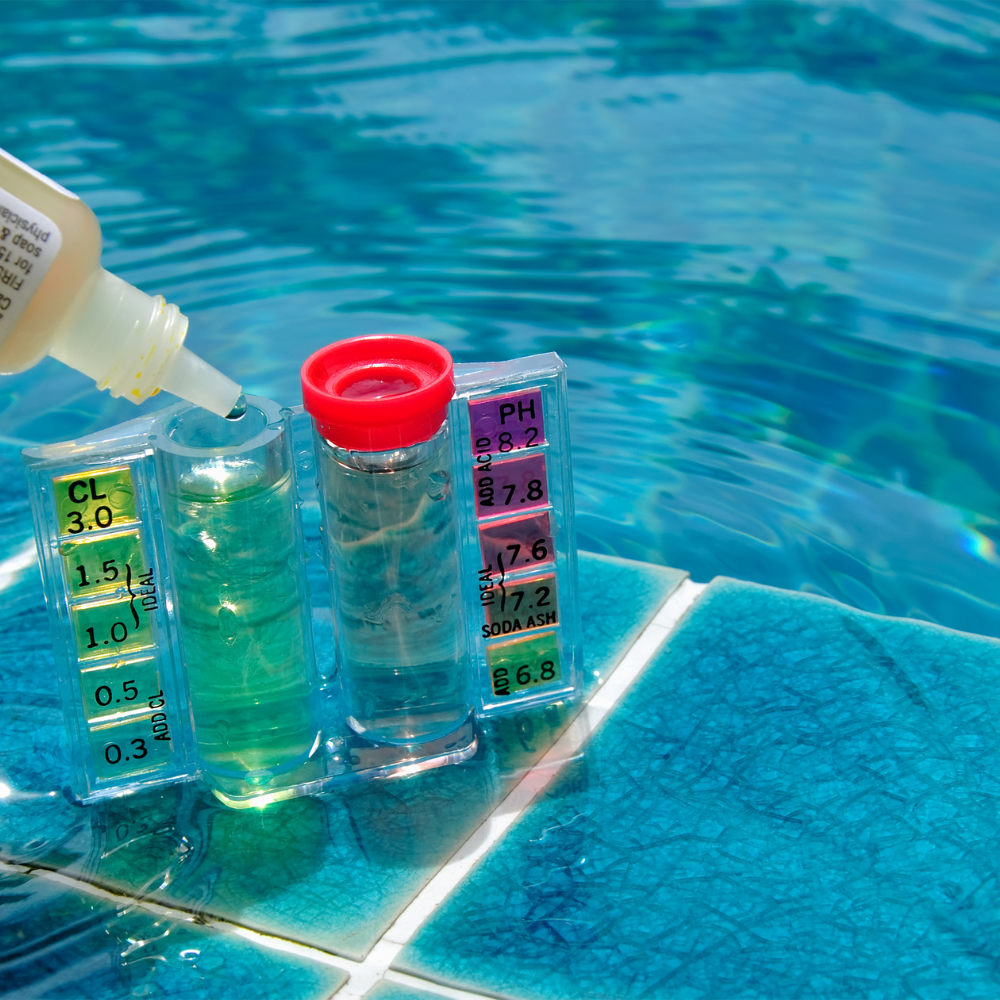Learn the real math behind pool chemistry. We bust myths about pH, chlorine, CYA, and hardness with numbers, not guesses.
Ask 10 pool owners about water chemistry and you’ll get 10 different answers. Some swear by adding chlorine tablets until the floater sinks. Others insist pH doesn’t matter as long as the water looks clear. Let’s cut through the noise. The truth lives in the math: doses, ranges, and costs you can calculate, not just guess at.
Myth 1: Clear Water Means Safe Water
Reality: Clear water can still be unsafe. A pool with 0 ppm free chlorine and pH at 8.2 might look fine, but bacteria is already multiplying.
| Parameter | Safe Range | Why It Matters |
|---|---|---|
| Free Chlorine | 2–4 ppm | Kills bacteria and controls algae |
| pH | 7.4–7.6 | Comfortable for swimmers and protects equipment |
Myth 2: You Can’t Overdo Stabilizer (CYA)
Reality: High CYA locks chlorine. At 100 ppm CYA, you may need triple the chlorine to sanitize effectively. That costs more over time.
Math: If 4 ppm chlorine is the target at 40 ppm CYA, you may need 12 ppm at 100 CYA to get the same kill rate. That’s three times the chemical bill.
Myth 3: Hardness Doesn’t Matter in Vinyl Pools
Reality: Even vinyl pools need some calcium. Too little and water pulls minerals from metal parts, causing corrosion.
Checklist: The Numbers That Work
- Alkalinity: 80–120 ppm
- pH: 7.4–7.6
- Free Chlorine: 2–4 ppm
- CYA: 30–50 ppm
- Calcium Hardness: 200–400 ppm
Keep this chart handy and stick to the ranges. It’s the fastest way to avoid algae blooms, eye irritation, and broken gear.
Need more step-by-step help? Explore Pool Lessons for deep dives or jump to Quick Fixes for emergency cures. For health and safety guidelines, check the CDC Healthy Swimming resources.
FAQ
What if my chlorine disappears overnight
Check CYA levels. If they’re too high, chlorine is locked. Partial drain and refill is the fix.
How often should I test
At least twice a week in summer. Daily if bather load is high.

